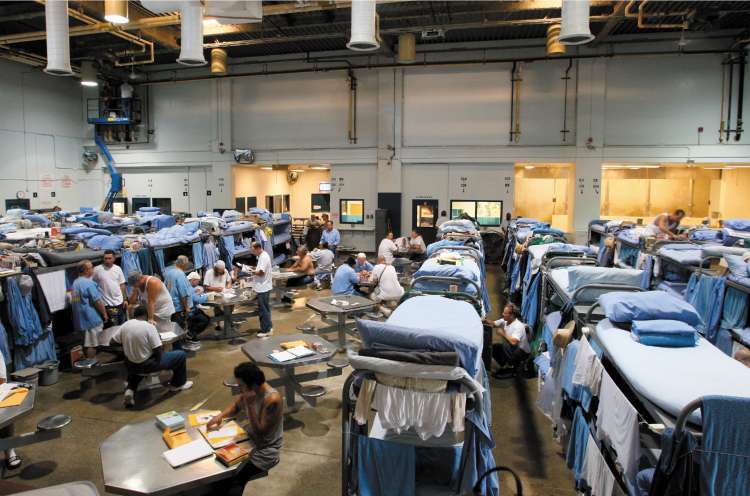One per cent of Americans now in jail

They used to call it the land of the free, but a new report shows that the United States is nowadays more a nation of the incarcerated. For the first time in history, more than 1 per cent of the US adult population is now behind bars. For minority populations, the rates of imprisonment are much higher.
The report, published by the Pew Centre using data partly supplied by the US Justice Department and Bureau of Prisons, acknowledges that the increase in the incarceration rate coincides with steep declines in violent crime, but questions whether the correlation between the two phenomena is direct.
It says that nationwide there are now 1.6 million people in prisons, translating into one in every 99.1 adults. It has never been so high and can be traced back to a surge of prison sentences handed down through the 1990s, although the rate has continued to trend upward since 2000.
The findings also underline America's position as the most prison-heavy country in the world, far outstripping China, which has the second highest rate of imprisonment as well as Russia, ranked third.
For minority groups the picture is especially bleak. One in every 36 Hispanic adults is currently behind bars, while the number for African American men is one in 15. More stunning is the rate of imprisonment for black men aged 20 to 34, where one out of every nine is now serving time.
The cost, mostly born by state prison systems, is also continuing to soar. The study says that the 50 states are now spending almost $50bn (£25bn) annually to house prison inmates, often more than they are devoting to higher education. They have seen a 127 per cent increase in spending on prisons since 1987.
"While states don't necessarily choose between higher education and corrections, a dollar spent in one area is unavailable for another," the study states.
Other factors that may have helped reduce crime rates include lower unemployment, changes in wage levels and improvements in policing. In its conclusions, the report questions whether taxpayers are getting value for money for the huge investment in prison facilities.
In particular, its authors urge states to consider focusing on alternatives to imprisonment for non-serious offenders, for instance sending drug-related criminals on counselling courses and others to community service programmes. They note that some states, notably Kansas and Texas, have already begun such experiments. There is no question that putting violent and chronic offenders behind bars lowers the crime rate and provides punishment that is well deserved," said Adam Gelb, the director of the Pew Centre's Public Safety Performance Project. "On the other hand, there are large numbers of people behind bars who could be supervised in the community safely and effectively at a much lower cost – while also paying taxes, paying restitution to their victims and paying child support."
Commending Texas and Kansas, the report states: "The new approach ... is allowing the two states to ensure they have enough prison beds for violent offenders while helping less dangerous lawbreakers become productive, taxpaying citizens."
Join our commenting forum
Join thought-provoking conversations, follow other Independent readers and see their replies
Comments
Bookmark popover
Removed from bookmarks